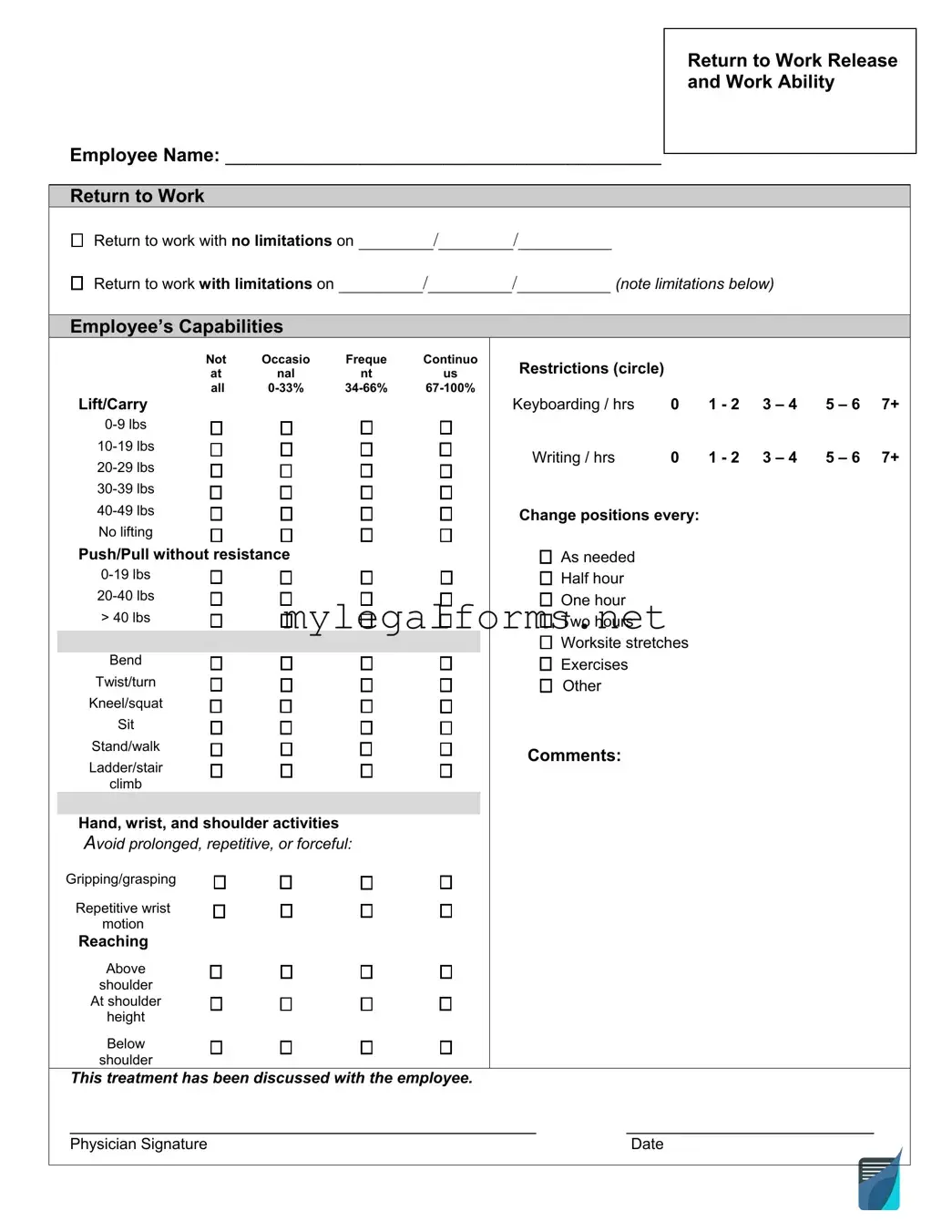Filling out a Work Release form can be a straightforward process, but many individuals make common mistakes that can lead to complications. One prevalent error is failing to provide accurate personal information. This includes not only the name and address but also the correct identification number. Inaccurate details can delay the approval process or even result in denial.
Another frequent oversight is neglecting to read the instructions carefully. Each form often comes with specific guidelines that outline how to complete it properly. Skipping this step can lead to incorrect entries or missing information, which may require resubmission.
In addition, individuals sometimes forget to sign and date the form. A signature is a crucial component, as it verifies the authenticity of the information provided. Without it, the form may be considered incomplete, leading to further delays.
Some people also underestimate the importance of providing supporting documentation. Many Work Release forms require additional paperwork, such as proof of employment or identification. Failing to include these documents can result in the form being rejected outright.
Another mistake involves not checking for typos or errors after filling out the form. Even a small mistake can change the meaning of a statement or lead to misunderstandings. It's essential to review the completed form thoroughly before submission.
Additionally, individuals may overlook the deadlines associated with submitting the Work Release form. Each jurisdiction may have different timelines, and missing these deadlines can hinder the ability to secure work release.
Moreover, some applicants fail to follow up after submission. It's wise to check on the status of the application to ensure that it is being processed. Ignoring this step may lead to missed opportunities or unaddressed issues.
Lastly, not seeking assistance when needed can be detrimental. Whether it’s asking a supervisor for clarification or consulting a legal expert, obtaining help can prevent many of the common pitfalls associated with filling out the Work Release form.

